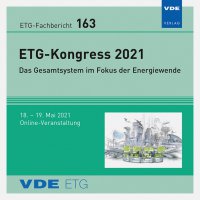Potential of air-source heat pumps complying with sound immission limits in the German building stock
Conference: ETG-Kongress 2021 - ETG-Fachtagung
03/18/2021 - 03/19/2021 at Online
Proceedings: ETG-Fb. 163: ETG-Kongress 2021
Pages: 5Language: englishTyp: PDF
Authors:
Greif, Simon; Limmer, Timo; Mayer, Florian (Research Center for Energy Economics, Munich, Germany)
Abstract:
Heat pumps are discussed as a key element in the decarbonisation of the German energy system. The project “Heat Pump Atlas” quantifies the potential of different heat sources for decentralized heat supply of residential buildings in Germany based on geo and statistical data. In contrast to previous analyses, the evaluation is carried out on the basis of comprehensive bottom-up models, covering different heat pump technologies. This paper presents the results and the methodology used to determine the potential of air-source heat pumps. The potential is defined as share of the heat demand that can be provided by air-source heat pumps while complying with the immission limits. At night, sound emis-sion values of 35 dB(A) must not be exceeded in residential areas. In addition to the maximum thermal power of the heat source, the heat demand must also be quantified. For this purpose, a bottom-up model is implemented. Using open geodata of the buildings, potential locations for air-source heat pumps and their distance to neighbouring buildings can be analysed. Considering sound propagation effects such as shielding and reflection allows a practical estimation of the installable thermal power per site. Since both the human perception of different heat pump systems and the local condi-tions for sound propagation vary, three scenarios are examined: A.) low sound emissions B.) medium sound emissions C.) high sound emissions. As a result, depending on the scenario, 72 % (A), 67 % (B) or 55 % (C) of the total heat demand in German residential buildings can be supplied by air-source heat pumps.


